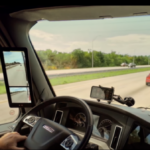Trucking is the backbone of the American economy, transporting goods across vast distances to keep businesses thriving. One critical decision truckers face is choosing the best time to hit the road: driving at night or during the day. Both options come with unique advantages and disadvantages, and selecting the right strategy can significantly impact a trucker’s efficiency and overall experience. In this blog post, we will explore the pros and cons of trucking in the USA at night versus during the day, helping you determine the optimal approach for your trucking endeavors.
Trucking at Night
Nighttime trucking has its own set of considerations, making it an appealing option for many truckers. Here are some factors to consider when trucking at night:
- Reduced Traffic Congestion: One of the significant advantages of driving at night is the decreased traffic volume. With fewer vehicles on the road, truckers can enjoy smoother traffic flow and shorter travel times, ultimately leading to quicker deliveries.
- Fewer Road Construction Delays: Nighttime often sees fewer road construction projects, minimizing the potential for delays due to lane closures or detours. This can be advantageous for truckers, allowing them to maintain a consistent schedule and avoid unnecessary downtime.
- Increased Fuel Efficiency: Driving at night can result in improved fuel efficiency due to reduced congestion and smoother traffic flow. With fewer starts and stops, truckers can maintain a more consistent speed, which positively impacts their fuel consumption and overall operating costs.
- Better Parking Availability: Truck stops and rest areas are often less crowded during nighttime hours, increasing the likelihood of finding available parking spaces. This can be particularly beneficial for long-haul truckers who need a safe and convenient spot to rest and rejuvenate.
Trucking During the Day
Daytime trucking has long been the traditional choice for many truckers. Here are some factors to consider when trucking during the day:
- Enhanced Visibility and Safety: Daylight driving provides better visibility, making it easier to spot potential hazards on the road. With improved visibility, truckers can effectively navigate traffic, read road signs, and react to changing road conditions promptly.
- Access to Facilities: Many businesses, warehouses, and distribution centers operate during regular business hours. If your route includes frequent stops for loading and unloading, driving during the day can offer easier access to facilities and smoother workflow, ensuring efficient deliveries.
- Human Circadian Rhythm: The human body naturally follows a circadian rhythm, aligning with the rising and setting of the sun. Driving during daylight hours may be more in sync with our internal biological clock, potentially contributing to increased alertness and reduced fatigue.
- Roadside Assistance Availability: In the event of a breakdown or any unexpected issues on the road, daytime trucking provides the advantage of increased availability of roadside assistance services. Many service providers operate during regular business hours, ensuring prompt response and support when needed.
Choosing between trucking at night or during the day depends on several factors, including your specific route, delivery requirements, personal preferences, and the nature of your cargo. While nighttime trucking offers benefits such as reduced traffic and increased fuel efficiency, daytime driving provides better visibility and access to facilities. Ultimately, developing a successful strategy requires a thorough understanding of your unique needs and weighing the advantages and disadvantages of each option. By carefully considering these factors, you can optimize your trucking operations and achieve greater efficiency and success on the American roads.





